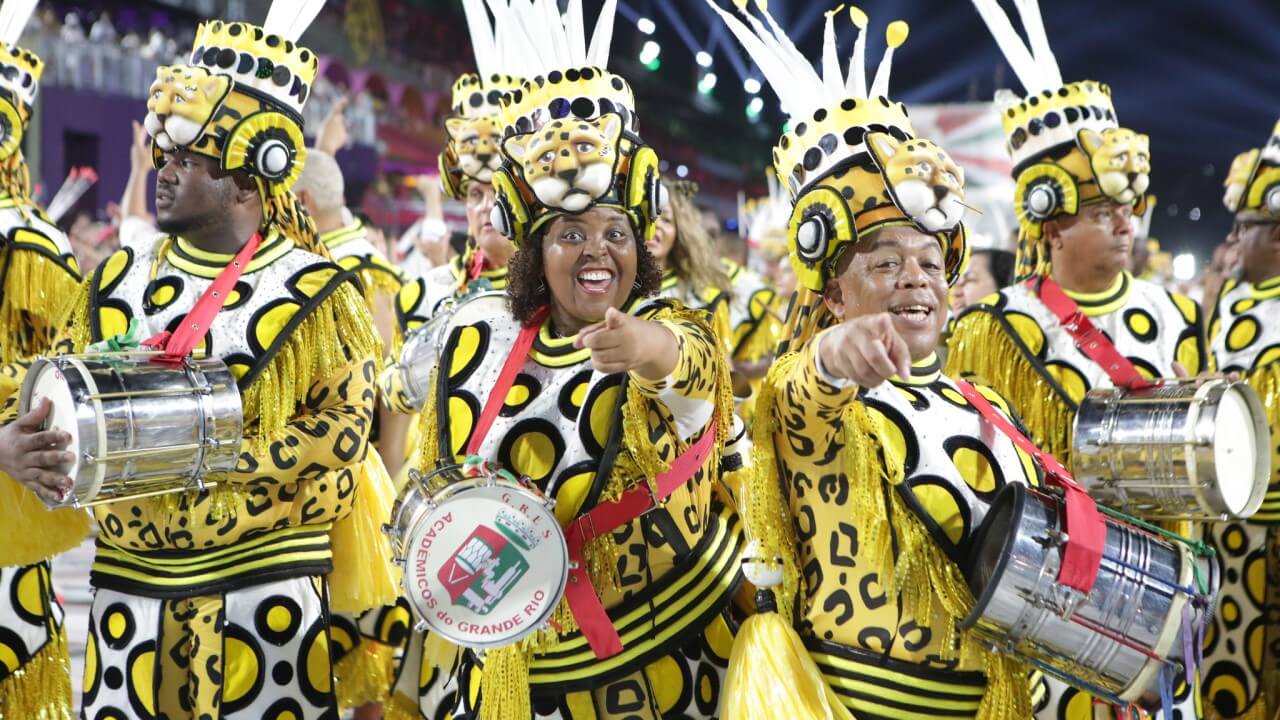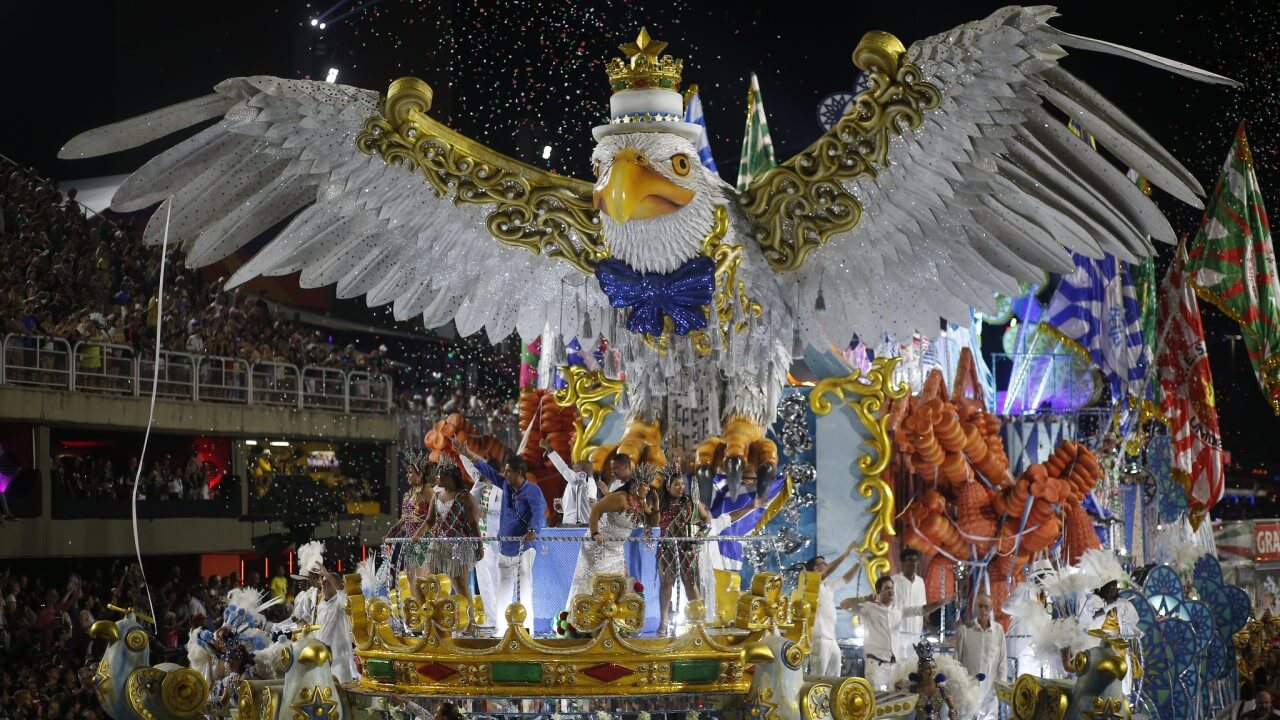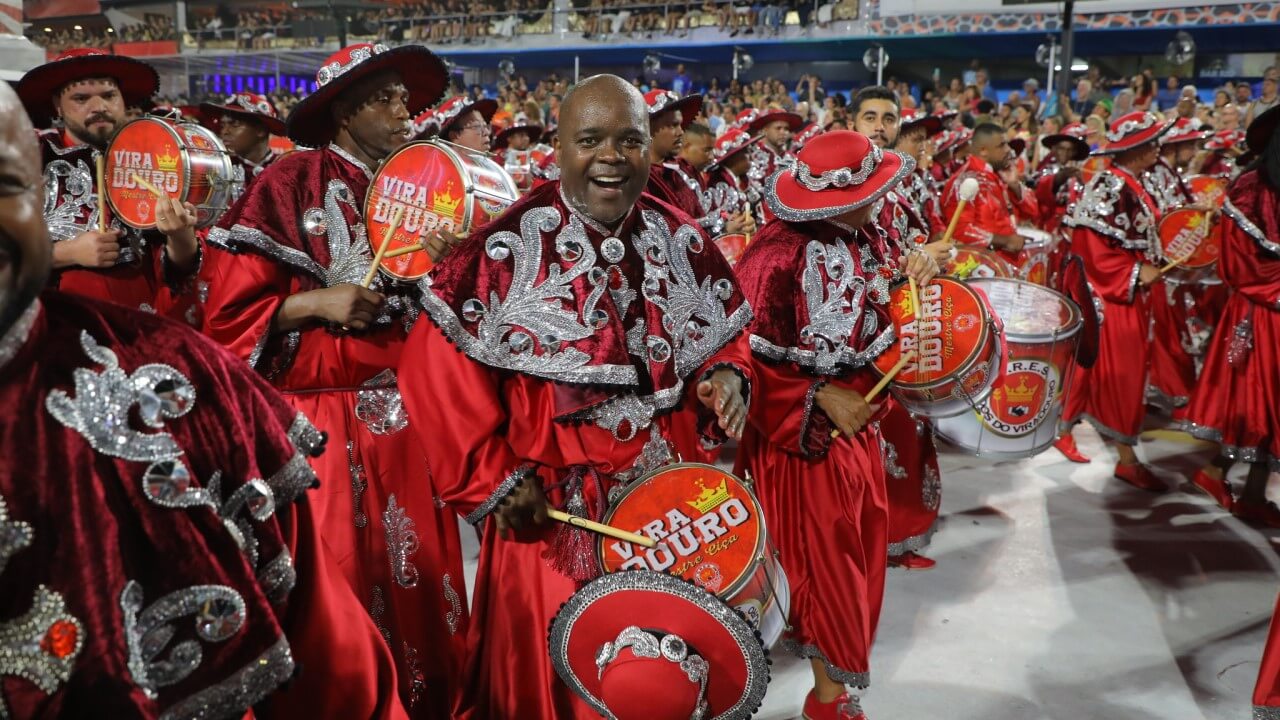
Samba Songs
Samba: the rhythm of Rio Carnival
The Samba and Bossa Nova are enough evidence of Brazil’s musical excellence. No true carioca will ever forget the singer Clara Nunes, the country’s most popular samba singer and one of the ‘three queens of the samba’. Tom Jobim popularized the bossa nova with the ‘The Girl from Ipanema’.
Although the Bossa Nova was short lived, it made a major contribution to many jazz standards. This musical style evolved from Samba, which is undoubtedly the musical essence of Rio.

Samba and the Carnival
Cariocas are proud of their culture; therefore, samba songs form a very important part of the Rio Carnival. Since the 1920s, thanks to the radio, the samba captured the music market with artists like Noel Rosa, Carmen Miranda, Orlando Silva, and Ari Barroso, becoming popular samba singers of the times. Towards the end of the decade, Ismael Silva founded "Deixa Falar" the first samba school that introduced samba songs to the carnival parade. Since the 1980s, samba songs have been accompanied by new instruments like the banjo, tantan, and more significantly, lyrics filled with slang.
Almir Guineto, Jorge Aragão, and Jovelina Pérola Negra were among the popular singers of the decade. Samba songs at the Rio Carnival portray the theme for each samba school. Today, a new generation of samba singers is attracting public attention. Some of these singers include Maria Rita, daughter of the famous Brazilian singer Elis Regina, Roberta Sa, Teresa Cristina, and Diogo Nogueira (João Nogueira’s son). These talented singers have kept the love of samba alive especially with the young people of Brazil.

Samba school songs
Every year each samba school choose their song and compose the lyrics after serious thought. Song writing contests are held and the winner’s song is rehearsed, recorded, and sold in record shops by Christmas. The song has to play repeatedly until the school reaches the end of the runway at the Sambadrome. Apart from the pulsating rhythms of the samba beat, the lyrics are what get the spectators into the mood, much more the cariocas.
Ask any carioca about songs like Aquarela Brasileira, Viva Meu Samba, and Pouca Saúde e Muita Saúva, São os Males do Brasil, some of the all time favorites that bring back nostalgic memories of samba parades gone by. Listening to samba not only will it be a lasting memory but it will provide you insight into the Brazilian culture.

Special Group
| March 2nd (Sunday) | March 3rd (Monday) | |
| 10:00 PM | To be defined | To be defined |
| 11:15 PM | To be defined | To be defined |
| 00:30 AM | To be defined | To be defined |
| 01:45 AM | To be defined | To be defined |
| 03:00 AM | To be defined | To be defined |
| 04:15 AM | To be defined | To be defined |
No pop, strictly samba
Don’t expect any of the samba songs sung by the top schools to be the equivalent of ‘Hey Jude’ or one of Brazilian’s current pop stars hit singles. Every song has a deep meaning to it, which is why lyricists and musicians take great pains to compose a new song each year. In addition, the judges award good points to school’s with an appealing samba songs. It would be worthwhile to pay attention to the lyrics at the Sambadrome on your visit to the Rio Carnival.
Plenty of Carnival guides feature the list of samba songs to be presented by each school, along with translations. This is a way to understand the story behind the samba school parades. Nothing happens by chance in a parade. Each song, costume and dance has history and meaning. The lyrics of the samba school song will help you to understand the theme of the parade and make it easier to understand the parade as a whole.
It's Carnival Time
Enjoy specials deals for Rio Carnival 2025
